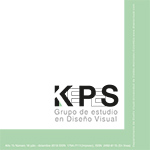Authors
Abstract
Based on the idea of the frontier character of art and industrial design, this article focuses on the hybridizations that historically have occurred between artistic and industrial objects. After a conceptual delimitation, the ready-made concept is proposed as the origin of the reflection between the boundaries of art and design, to later verify how certain historical avantgardes have been interested in the latter concept. These avant-gardes (especially Dadaism, Futurism, Surrealism and Constructivism) experienced, in one way or another, an approach to industrial design, either making art with more or less functional elements, or going directly into the design of furniture and products. Relating the behavior of avantgardes with contemporary industrial design, connections are made between the objects of the first decades of the twentieth century and others of our contemporaneity. The conclusions obtained verify the incursions in both directions (art-design, design-art), as well as the hybrid character of contemporary creation.
References
Antonelli, P. (2003). Objetcs of Design from the Museum of Modern Art. New York, USA: MoMA.
Barilli, R. (1987). ll ciclo del postmoderno. La ricerca artistica negli anni’80. Milano, Italia: Feltrinelli.
Baudrillard, J. (1968). El sistema de los objetos. Ciudad de México, México: Siglo XXI.
Basurama. (2011). RUS. Residuos Urbanos Sólidos. Basura y espacio público en Latinoamérica, 2008-2010. Salamanca, España: Editorial Delirio.
Formaggio, D. (1981). L’arte come idea e come esperienza. Milano, Italia: Mondadori.
García Canclini, N. (1990). Culturas híbridas. Estrategias para entrar y salir de la modernidad. Ciudad de México, México: Grijalbo.
Gan, A. (1922). El constructivismo. Barcelona, España: Editorial Tenov.
Lafargue, B. (1996). L’art postmoderne du kitsch ou le melange des genres et des gouts. En VVAA, Lo bello, lo kitsch y lo distante. Lejona, España: Universidad del País Vasco.
Marinetti, F. (1922). Gli Indomabili. Milano, Italia: Mondadori.
Midal, A. (2005). Design et art: à la conquête de l’ouest. Parachute, 117.
Moles, A. (1971). El kitsch. El arte de la felicidad. Barcelona, España: Paidós.
Munari, B. (1971). Artista y designer. Bari, Italia: Editori Laterza.
Marín, J.M. y Torrent, R. (2016). Breviario de diseño industrial. Función, estética y gusto. Madrid, España: Cátedra.
Pok, M. (2010). Design et art: un mariage arrange. En H. Bouchez et al., The Fabulous Destiny of the Quotidian. Hornu, Belgique: Musée des Arts Contemporains.
Rosenberg, H. (1964). The anxious object. Art today and its audience. New York, USA: Horizon Press.
Salabert, P. (1989). Estética del todo o teoría de lo “light”. Valencia, España: Fundación Instituto Shakespeare.

 pdf (Español (España))
pdf (Español (España))
 FLIP
FLIP






















